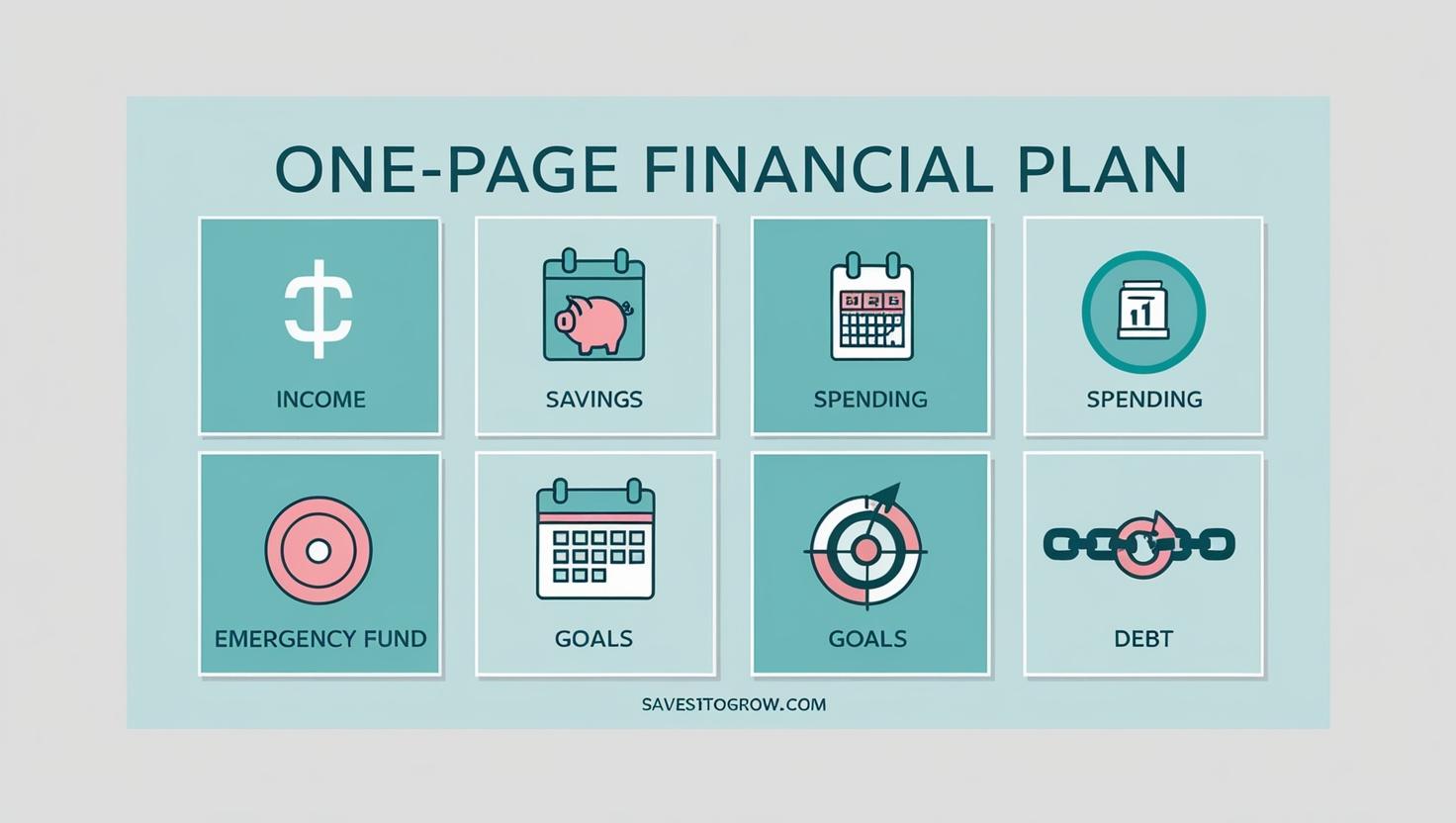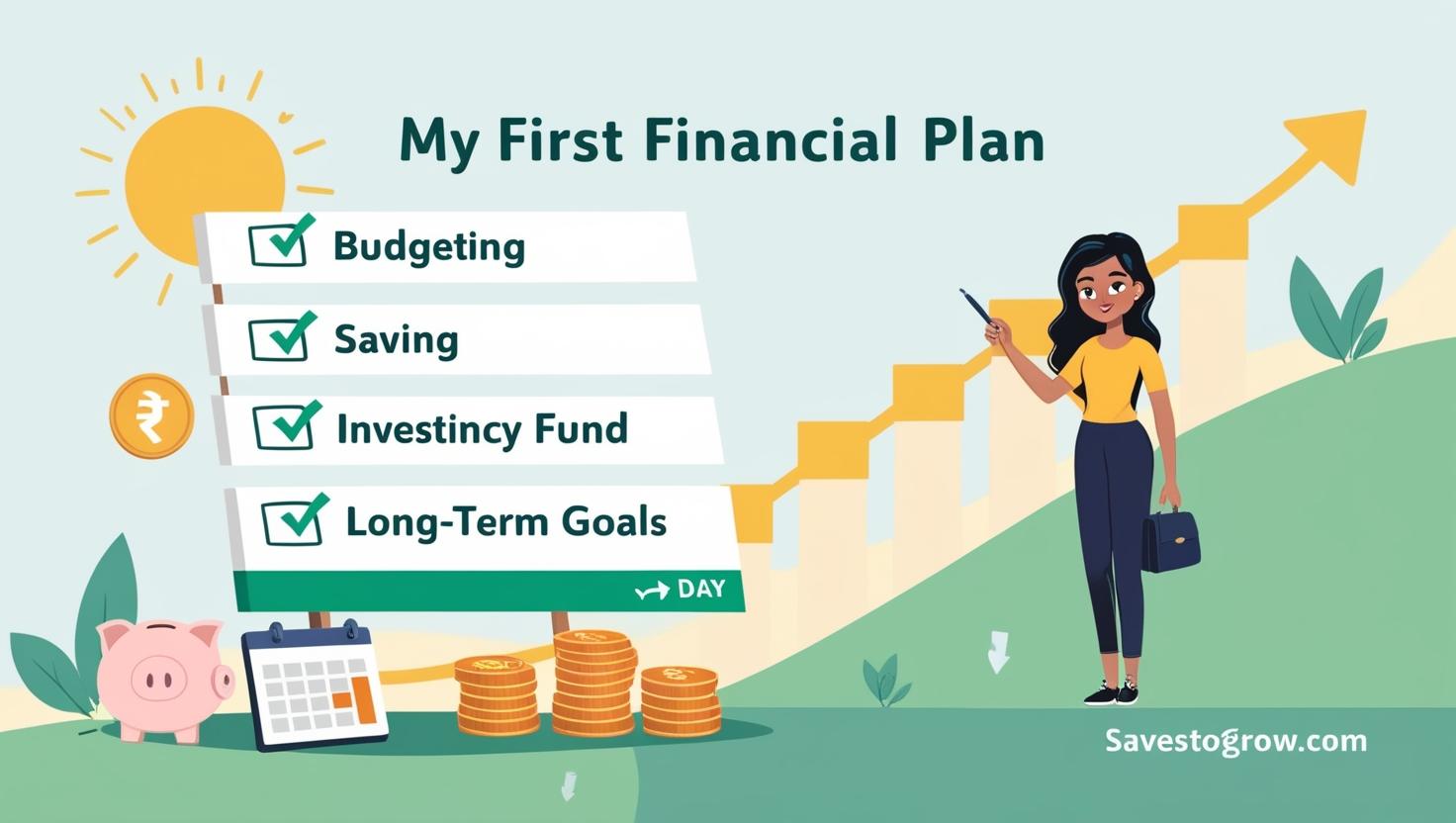A few years ago, I found myself staring at a messy Excel sheet filled with random savings, impulsive spends, and vague future goals. I was earning well but had no real control over my money. Sound familiar?
You’re not alone. A 2023 RBI report revealed that only 24% of urban Indians have a structured financial plan. Most of us either overcomplicate money management or ignore it entirely—until an emergency hits.
This article will help you create a simple, one-page financial plan—no complex jargon, just actionable steps tailored to Indian earners like you. Let’s turn financial anxiety into confidence.

Why a One-Page Financial Plan Matters in India
Financial planning often feels overwhelming because:
- Myth: “Only the rich need a plan.” (Reality: A ₹25,000/month earner benefits more from structure.)
- Pain Point: Endless Excel sheets or apps that never get updated.
- Emotional Block: “I’ll save later”—but later never comes.
In India, where medical emergencies and job instability are real risks, a clear plan acts as a safety net.
The Mindset Shift – Money as a Tool, Not a Mystery
Think of your finances like a chai recipe:
- Too little sugar (savings)? Bitter future.
- Too much spice (risky spends)? Unbalanced flavor.
- Perfect brew? Consistent, intentional steps.
Your one-pager is the recipe card—simple, repeatable, and adaptable.
Step-by-Step Guide to Your One-Page Plan
1. Income & Fixed Expenses
- List take-home salary (after PF/TDS) and fixed costs (rent, EMI, subscriptions like Netflix/Amazon Prime).
- Example: “₹65,000 salary – ₹18,000 rent – ₹5,000 loan EMI = ₹42,000 left.”
2. Non-Negotiable Savings (Pay Yourself First)
- Rule: Save 20% before spending. Automate via RD/mutual fund SIPs.
- Indian hack: Use UPI auto-debit to transfer savings instantly on salary day.
3. Guilt-Free Spending Bucket
- Allocate 30% for groceries, outings, shopping. No tracking needed—enjoy within this limit.
4. Emergency Fund (Start Small)
- Target 3–6 months’ expenses. Park in a liquid fund or high-interest savings account (e.g., Axis ASAP, ICICI iWish).
5. Goals with Deadlines
- Short-term (1–3 years): “₹2L for a Europe trip.”
- Long-term (10+ years): “₹50L for child’s education via SIP in Nifty 50 index fund.”
6. Debt Review
- List all debts (credit cards, personal loans). Attack high-interest ones first.
7. Insurance Check
- Term life cover = 10x annual income. Health insurance: ₹5L+ for family.
Real-Life Example – Priya’s Turnaround

Priya, a 28-year-old Bangalore IT professional, was saving randomly. She:
- Wrote her one-pager in 30 minutes.
- Automated ₹10,000/month to a PPF (for tax-free returns) and ₹5,000 to a gold ETF.
- Cut unused subscriptions (saved ₹1,200/month).
In 1 year, she built a ₹1.5L emergency fund and booked a Thailand trip guilt-free.
Tools to Automate Your Plan (India-Friendly)
- Tracking: ET Money, INDmoney
- Investing: Groww, Kuvera (for SIPs)
- Emergency Fund: Liquid mutual funds (e.g., SBI Liquid Fund)
Conclusion – Start Small, Start Today
You don’t need a fancy app or a finance degree—just one page and honesty. Action step: Grab a notebook now and jot down:
- Next month’s income.
- One expense to reduce (e.g., “Switch from Zomato Gold to home meals 3x/week”).
Small steps > perfect plans.
Quick Recap: What You’ll Remember
✅ 20% savings first—automate it.
✅ Emergency fund = 3–6 months’ expenses.
✅ Goals need deadlines (e.g., “₹5L down payment by 2027”).
✅ Debt & insurance are non-negotiable reviews.
Sources: RBI’s Financial Literacy Report (2023), SEBI investor surveys, ET Money study on SIP trends.






